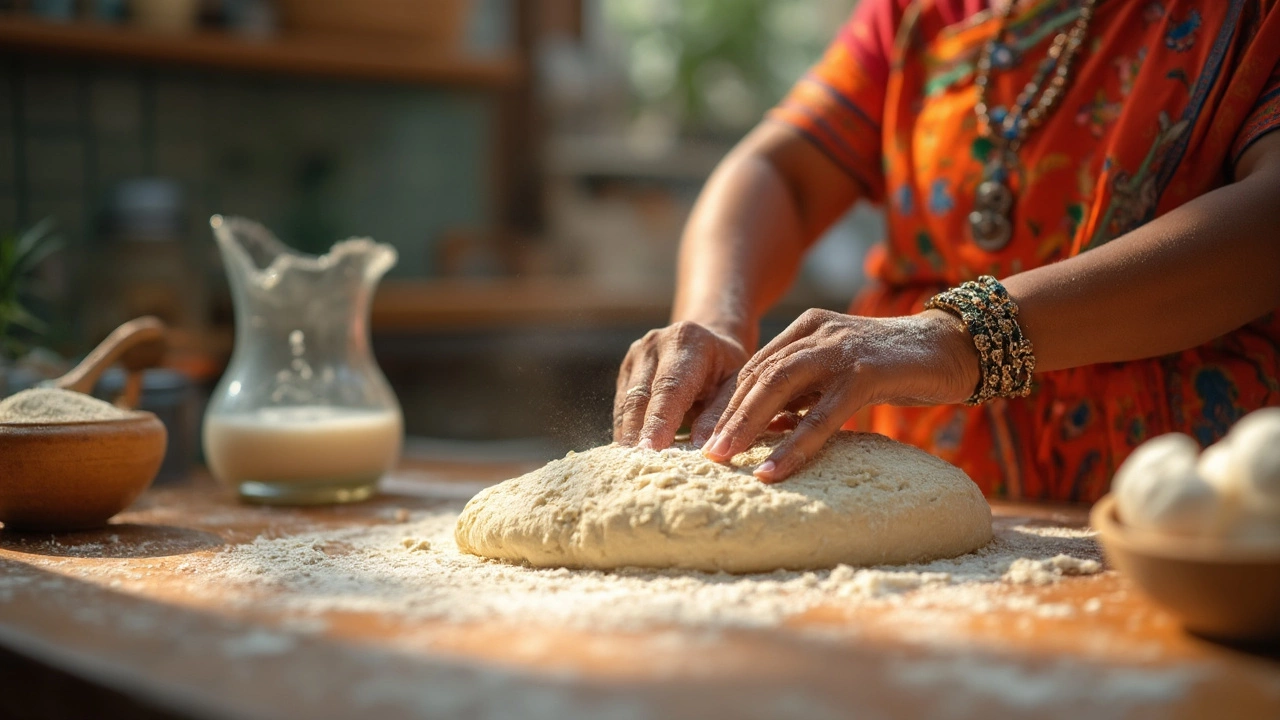Making Roti: Tips, Tricks, and Common Mistakes
When working with making roti, the process of turning wheat flour into a soft, puffy Indian flatbread. Also known as chapati preparation, it blends simple ingredients with a few technical steps that can change the result dramatically.
If you’re looking to master making roti, start with the right roti dough, a mixture of whole‑wheat flour (atta), water, and a pinch of salt. The dough’s hydration level decides whether the bread stays stiff or becomes tender. Knead until it feels smooth and a bit elastic; that’s the point where gluten has formed enough to hold steam during cooking. Let the dough rest for at least 15‑20 minutes – the rest period lets the gluten relax, which in turn makes rolling easier and the final roti softer.
Many home cooks wonder whether to add a leavening agent. baking soda, a mild alkaline that reacts with moisture and heat can give a subtle lift and a hint of tenderness. Use only a pinch (about ¼ tsp per kilogram of flour); too much makes the roti taste soapy. Some recipes call for baking powder, a blend of baking soda, an acid, and a filler for a stronger rise, but most traditional roti stay flat until the heat hits the pan, so baking soda is usually enough.
The timing of oil matters. Adding oil, usually a tablespoon of ghee or vegetable oil per cup of flour after the dough has rested helps coat the gluten strands, resulting in a softer bite. Sprinkle the oil directly into the dough and knead briefly; this prevents the oil from seeping out during cooking and creates a more pliable surface for rolling.
One of the biggest frustrations is a flat, non‑puffed roti. A puffed roti, the ideal result where the bread inflates like a balloon needs three things: proper dough softness, a hot dry pan, and a quick flip. When the dough is too stiff, it won’t trap steam. When the pan is cool, the roti cooks slowly and never puffs. The trick is to pre‑heat the skillet until a few drops of water sizzle, then place the rolled roti, wait for tiny bubbles, and give it a swift turn. Within seconds the bread should puff, creating the signature airy pockets.
What You’ll Find Next
Below you’ll discover articles that dive deeper into each of these steps – from why roti sometimes refuses to puff, to the science behind adding baking soda, and the exact moment to mix oil into your dough. Whether you’re fixing a stubborn flat chapati or perfecting your next batch of fluffy rotis, the guides ahead give clear, actionable advice you can try right away.

Why Does Roti Get Hard After Cooking? Simple Fixes That Work
Roti can go from soft to tough pretty quickly, and it's not just luck—technique matters. This article digs into why rotis often turn hard after cooking and how to keep them soft every time. From dough texture and resting times to rolling skills and cooking tricks, you'll find clear reasons and down-to-earth solutions. Common myths will get debunked with actual practical advice. If you want your rotis to be soft and fluffy, this is a must-read.